Review for Simoun - Endless Melody Collection
Introduction
I’m drifting away from my comfort zone again. Anime is a niche product, but there are niches within niches, little niche-lets that we in the UK are unlikely to see simply because the fan base just isn’t large enough to support it. A show which might sneak a few hundred copies in the US, just about breaking even, wouldn’t even sell a tenth of that in the UK, which is why so much of the anime that we get here is either the big name titles, or the audience friendly mainstream tropes. One of the niche-lets that we miss out on is alternative lifestyle stories. We don’t get yaoi or yuri titles here. Yaoi or boy’s love is that subset of anime and manga that tells gay storylines aimed at predominantly female audiences. We’ve had just one such anime title released here in my memory, Gravitation. Yuri on the other hand are lesbian storylines aimed at male audiences, and while we do get elements of yuri in mainstream anime, there are no yuri titles in the UK as far as I know. The closest we got was Rin: Daughters of Mnemosyne.
It was word of mouth that prompted me to import Simoun. It was one of those best-of anime podcasts, where someone had chosen it as among their best anime of the 2000s, and gave such an eloquent appraisal of it that my curiosity was stoked. The description ought to have been some indication, as was the blurb repeated from the case when I placed my order, but it was only when I saw the case with the garish pink Yuri Fan logo that I realised that it had already been separated, categorised, compartmentalised and marketed to a specific mindset. Hopefully there is more to it than just that.
The theocracy of Kyuukoku’s population is all born female. They grow up as girls, and at the age of 17 they are called to The Spring where they choose the gender that they will live the rest of their lives, or have a gender chosen for them if they can’t. The exceptions to this rule are the Simoun Sibyllae, the priestesses of the nation. Simoun are ancient craft, almost mythical in that their origins remain a mystery. They hold the prime examples of the helical motors that power Kyuukoku’s technology, and the Sibyllae pilot these craft as prayers to the Tempus Spatium that the people worship. The light trails behind the craft, coupled with the formations that the priestesses fly in are the invocations of prayer called Ri Mājon, and can unleash tremendous powers. The priestesses alone get to choose when they visit the Spring, and pass from childhood into adulthood.
Except that Kyuukoku is at war, and the sanctity of the priestesses has been perverted by making them into warriors. The Simoun Sibyllae are now sorted into squadrons, Chors, and they use the Ri Mājon as weapons in battle. Three Chors operate from the flagship Arcus Prima, and the elite of the elite is Chor Tempest. At least they were until a crucial battle where they attempted the ultimate Emerald Ri Mājon. They failed resulting in the loss of life of top Sibylla Amuria. Her co-pilot Neviril, who the rest of the chor idolise, fell into a depression, and two other sibyllae left the chor to make their pilgrimage to the Spring. As the war continues to heat up, the invulnerability of the Simoun shaken, and the balance of power shifting, it’s more important than ever for Chor Tempest to be at strength. When new recruits arrive, among them is Aer, an eager pilot with a natural talent, more a warrior than a priestess, her goal is to fly with the best. In Chor Tempest, that means flying with Neviril, but it looks like Neviril will never fly again.
All 26 episodes of Simoun are presented in this budget collection from Media Blasters, 5 discs collected together in the Endless Melody Collection.
Disc 1: Choir of Pairs
1. Fallen Wings
2. The Blue Spring
3. The Distant War
4. The Nearby War
5. White Loneliness
6. Wounds and Pain
Disc 2: Orchestra of Betrayal
7. Over International Waters
8. Prayer
9. The Hearing
10. Birds in a Cage
11. United Front
Disc 3: Rondo of Loss
12. Sisters
13. Reason
14. Sacrosanct
15. One, and Then Another
16. The Emerald Ri Mājon
Disc 4: Crescendo of Lamentation
17. The Ruins
18. The Funeral
19. Sibylla
20. Lament
21. The Door to a New World
Disc 5: Song of Prayer
22. Sortie
23. Eternal Maidens
24. Choices
25. Pair
26. Their Portraits
Picture
Simoun gets a 1.78:1 anamorphic NTSC transfer across these five dual layer discs. It’s not the most striking of transfers, with a fair bit of shimmer and aliasing on fine detail. Combing artefacts associated with the interlaced transfer are rarely noticeable, but some scenes are prone to judder. It’s not the most striking of animations either, with simple, but individual character designs, set against even more simplistic, watercolour and pastel backgrounds. Detail levels in the artwork are never high, which makes the use of CGI for the various aircraft and vehicles seem all the more jarring. Also, the director has a habit of using ‘harmonies’, a sudden freeze-frame to pencil art image to emphasis the show’s dramatic moments. It’s supposed to be artistic and dramatic, but it just feels cheap. All that said, the show’s animation does enough to tell the story, and the character animation is strong enough to get their emotions across, which is really all you need to ask of a show.
Sound
Simoun gets a rather understated and indeed underwhelming DD 2.0 Stereo Japanese track, with optional translated subtitles. There is no English dub for this release. The stereo is adequate, does a good enough job of getting the action and the music across, giving the show a little space to work in. The dialogue is also clear throughout. It’s just that in comparison to the music used on the menu screens, the programme audio is a little dull and muddied. There is also a problem on disc one in that the audio (and subtitles) are out of sync for episodes 5 and 6, the last two on the disc. The sound is delayed by anything up to a third of a second, and is pretty disconcerting to watch. There never was a fix for this disc, and with the precarious state of Media Blasters, it doesn’t look as if there ever will be. The subtitles are otherwise accurately timed and free of significant error.
If there is one place that Simoun really shines, it’s in its music soundtrack. While the theme songs suit the show well, the incidental music rises above most other anime shows. Simoun has something of an eclectic soundtrack, varying from orchestral themes, simple pieces of electronica, to charming folksy music, complete with accordions. It’s quirky and it’s unexpected, and it really helps the show stand out from the crowd.
Extras
I was dreading getting this, as prior experience with Media Blasters’ budget packaging has left me with a fundamental trauma. Stack Packs are the bane of the devil, and putting more than one disc on a spindle should be avoided at all costs. Ah My Buddha had six on one spindle, Genshiken had seven. Simoun may be released on five discs, but the thought of them on one spindle still sends shivers down my spine.
But in the end, that wasn’t the case. The Endless Melody Collection comes in a case that is just a millimetre or so wider than a normal Amaray. It holds two overlapping discs on the front of the case, two on the rear, and one disc on a central hinged panel. All nice and accessible.
The discs present their content with static menus.
Disc 1
Here you will find selectable trailers for Voltron, Kashimashi, Girls High, and Ramen Fighter Miki. The image might say Aoi & Mutsuki, but the trailer is most definitely that for Voltron.
The Character Discussion lasts 7 minutes, and gathers the pair of Aer and Neviril, voice actors Michi Niino and Rieko Takahashi for some light-hearted Q & A about the show and the characters. This segment is presented by a giant lollipop (shaped like a spiral, just like the helix that powers a Simoun).
Voice Actor Contest lasts 18½ minutes, and has the voice actors that portray Chor Tempest get together for a bit of fun, a Simoun based competition to find out just which is the most compatible pair.
Disc 2
The only trailer here is that for Phoenix.
This time the Character Discussion, now renamed Cast Interview Part 2, and again 7 minutes worth, invites Ami Koshimizu and Michiko Hosokoshi, the voices behind the pair of Paraietta and Kaim to take part in the Q & A games.
The Staff Commentary Part 1 lasts 17 minutes, and director Junji Nishimura and Character Designer and Animation Supervisor Asako Nishida sit down to comment on the show. Clips from the first few episodes play in the background as they talk about the show, the characters, and the ideas that they are trying to bring across. They also talk about some of the creative decisions that they took.
Disc 3
Here the trailer is for Kujibiki Unbalance
The Cast Interview Part 3 this time ensnares Mamiko Noto and Yukana, the voice actors for Rimone and Dominura for a laid back Q & A. Also the talking lollipop is joined by his French counterpart. This also lasts 7 minutes
Staff Commentary Part 2 lasts 15 minutes, and Junji Nishimura and Asako Nishida continue their discussion, trying hard to avoid spoilers for the latter half of the series.
Disc 4
The trailers here are for The Twelve Kingdoms and Grenadier.
This time there is only The Cast Interview Part 4 presented as an extra on this disc. In it, voice actors Mikako Takahashi (Roatreamon), Rika Morinaga (Mamina), and Kaori Nabuka (Yun) face the dreaded Q & A game. This time the featurette is 8 minutes long.
Disc 5
There is a problem with this disc, in that the Play All option links to the extras page and doesn’t actually play the episodes. You’ll have to go to scene select and choose the first episode and go from there.
One last time for trailers, and this time it is Genshiken, and the Kujibiki Unbalance OVA trailer that it holds within.
The Cast Interview Part 5 lasts 8 minutes and sees Nana Mizuki (Morinas), and Fumie Mizusawa (Wapōrif) face the Q & A challenge presented by lollipops. This final Cast Interview is presented in the wrong, anamorphic aspect ratio.
The Staff Commentary Part 3 last 18½ minutes, and has Junji Nishimura and Asako Nishida commenting on the key scenes from the show’s final episodes, without giving too much away.
Finally there are the textless credits for the show.
Conclusion
It doesn’t take long for the yuri sales pitch for the show to fade into the background. Romantic relationships between girls are a key part of the story, but in a world where everyone is born female, and remains that way until adulthood when they finally choose a gender, and in a show where every character regardless of gender is voiced by a female voice actor, it becomes less a point of titillation than it is a matter of fact. It is simply just the way this world works, and it makes for a very interesting story indeed. Simoun is a different sort of anime series from the normal, as it manages to balance narrative, ideas and character in a way that makes for a very thoughtful and measured piece of storytelling. It also presents some serious world-building, yet it does all this without dishing out all its secrets on a plate, and while it will answer most of the questions that the story poses, it leaves enough hanging to keep the viewer tantalised, just a few what-ifs to ponder. It’s a very satisfying way of telling a story, and very few anime that we get in the UK can deliver such contemplation.
It begins with the world of course, a world where everyone is born female, and only through transition to adulthood do they become man or woman, a transition that is fundamentally religious in nature. At least that is the case for Simulacram of Kyuukoku, and we are led to assume its rival nation of the Plumbum Highlands as well. The same isn’t shown for the other enemy, Shoukoku, an industrial and mechanised nation with less of a religious bent, but one that through medical intervention chooses the gender for its citizens at birth. For two-thirds of this world however, religion plays a big part, with Kyuukoku’s worship of the Tempus Spatium, and the Highland’s derivative religion tied in to the gender choices of its adult citizens. And for both of these nations, it is the children that are key to its religious ceremonies.
The world’s technologies are also tied into this, all based on the helical motor that powers the Simouns of the title. It’s a lost technology from the distant past, unfathomable and incomprehensible like all good religious artefacts, but reproducible. For Kyuukoku at the start of the show, they have the technological advantage. They’ve discovered ancient Simouns and have resurrected them. Copies of the helical motors power the nation’s technology, but only the original helical motors power the Simouns. The nation’s priestesses, girls that are yet to travel to The Spring to become adults fly the Simouns, and the formations that they create serve as prayers to the Tempus Spatium, while the priestesses are revered as a result.
But then comes the war, theological in nature between Kyuukoku and the Highlands, while a war for resources between Kyuukoku and Shoukoku. Shoukoku have industrialised their society, but without the helical motors are victim to over-industrialisation and pollution. They want the technology to solve their problems. As so often happens in our world, the difference between Kyuukoku and the Highlands boils down to their people worshipping the same god, but by different names. Against the overwhelming material superiority of Shoukoku, Kyuukoku need an advantage, and that is the Ri Mājon that the priestesses fly as their prayers. Not only are they devotional aerial formations, but they are also expressions of energy that can be used for offence and defence, totally decimating enemy forces. So it is that the priestesses of this world, children in all possible ways, also become soldiers, having to reconcile their faith with committing violent acts at the behest of their countries leaders, religious and otherwise.
Those Sibyllae that fly and fight in the war become a precious resource, and get optional exemptions from adulthood, so that they can fly for longer. There also becomes a Peter Pan aspect to the story, with some choosing to fly simply so that they can remain children, and of course deferring the eventual decision and transition to adulthood only makes it more ominous and terrifying.
That’s really the background to the story. The anime concentrates on the characters and their tales, especially the Sibyllae of Chor Tempest, the elite squadron that operates from the Arcus Prima carrier. The story begins at a point of transition for the priestesses, following an incident that throws them onto the back foot. Attempting a proscribed Ri Mājon, the manoeuvre goes horribly wrong, resulting in the loss of their best pilot Amuria, and the resulting loss in morale sending her co-pilot Neviril into a depression, and further depleting their numbers when two priestesses choose adulthood rather than remain. Their position as elite threatened, it becomes even more precarious when the replacement pilots arrives, among them Aer, who knows little about religion and Simouns, and really just wants to fly with the best. She’s also someone who refuses to grow up, and sees the Simoun as a way of avoiding adulthood. The best in Chor Tempest is Neviril, and Aer in her clumsy blatant way decides to fly with her, despite her lingering grief over Amuria.
The interesting thing in the show is the relationship between the priestesses, and the way that the story is careful and insightful about developing them. Two Simoun pilots have to have an emotional bond for their machine to work. It’s started by the pilots kissing each other and then the Simoun (better security than a car alarm and an infra-red key), and their emotions have to be in tune for their piloting to be smooth. But the relationships between these pilots are anything but. They all have their different reasons for flying, the love and affection between them can be turbulent and capricious, and they are burdened by past relationship baggage that affects their relationships in the present. None of this is helped by the fact that they are still children, in lack of emotional maturity if not in physical age, and miscommunication, selfishness and hurt feelings abound. Simoun impresses in the way that it develops these relationships and its characters, and rather than an afterthought to the narrative, the way that the characters interact is key to the story.
Of course there is that story as well, the way that the war develops, the secret behind the Simoun and the Ri Mājon, just what happened to Amuria, and the various oddities and mysteries that crop up during the episodes. There are also side stories involving other characters, the military, the politicians and the theocracy that add layers to the story. Simoun is also a little odd for an anime in that it makes sure to tell its story in the time it has available, never going for the extra series or the OVA episodes, or telling the viewers to buy the manga to find out more. The war actually ends, and ends in an unexpected way, four episodes from the conclusion. The final four episodes deal with the aftermath, and follow up on the characters, and shows the effect that fighting in the war has had on them, and the choices for their lives that they subsequently make.
Simoun doesn’t have a lot going for it at face value. The music is something special, but the animation is always simplistic, and production values are often lacking. Media Blasters’ treatment of it isn’t complimentary either, with unimpressive audio, and production errors apparent in its presentation. But there is a lot going on under the surface of the show, and it’s a story that really delivers in terms of complexity, layered narrative, and well thought out and rewarding characterisation. It’s a show that may not impress so much while you’re watching it, but inspires so much thought and appreciation afterwards that you can see why it would make a best of list. It is one of the better constructed anime stories out there, and if you can find a copy despite Media Blasters’ current woes, you really ought to snap it up.
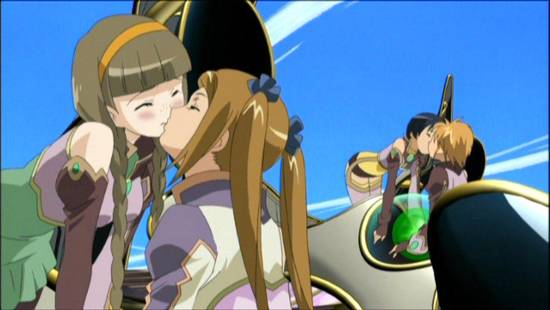
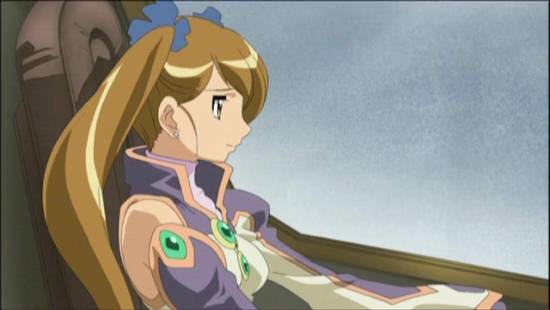
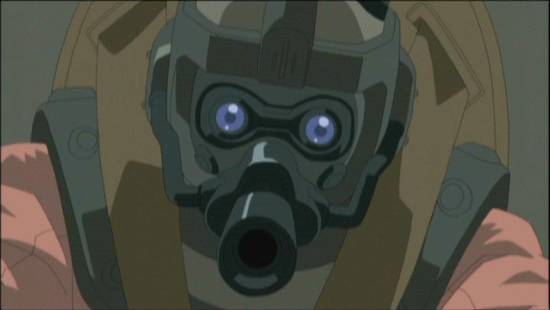
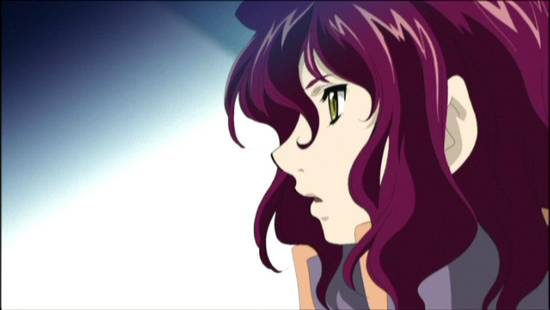
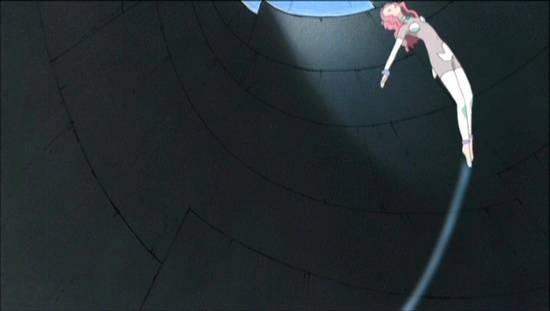


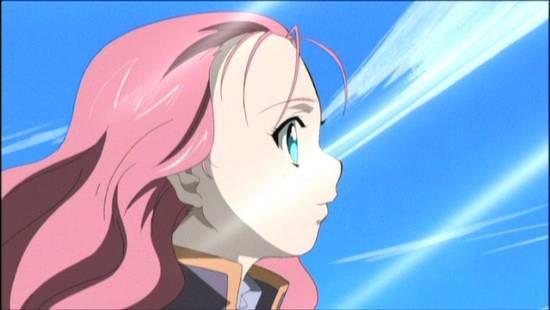

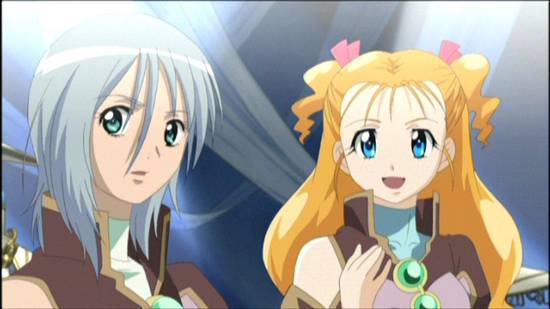
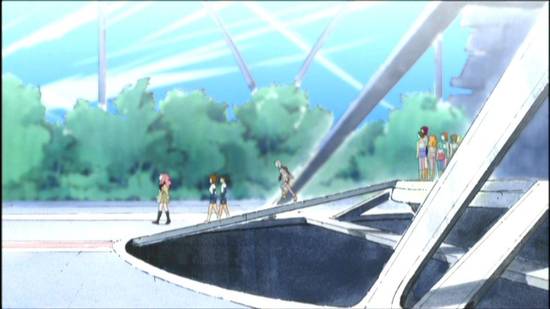
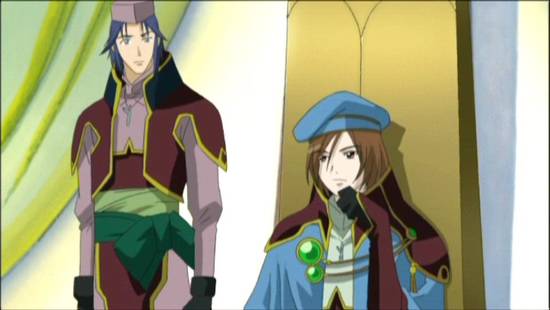
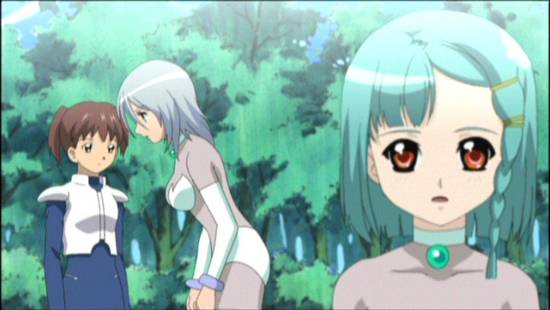
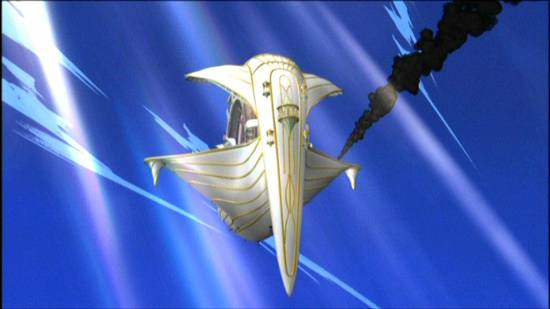
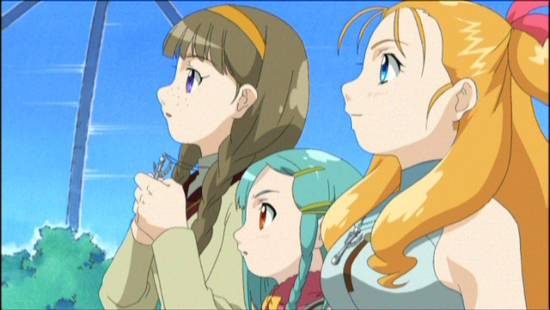
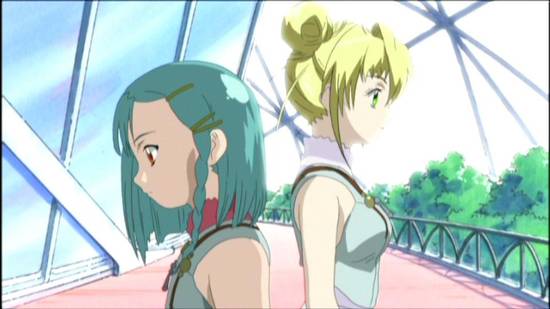
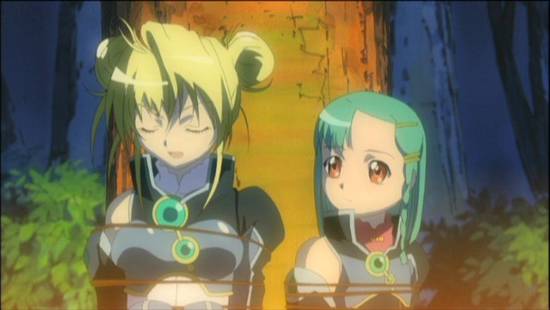

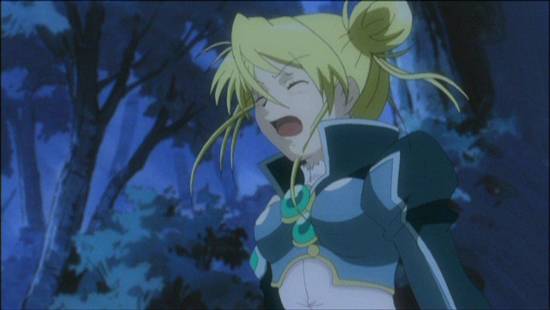

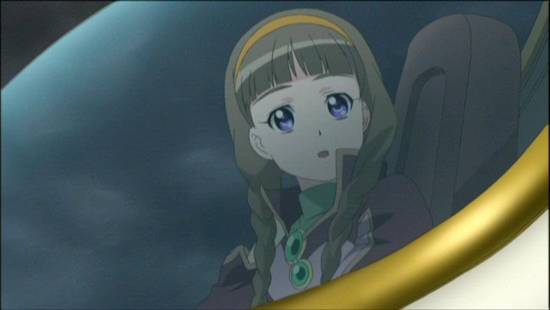
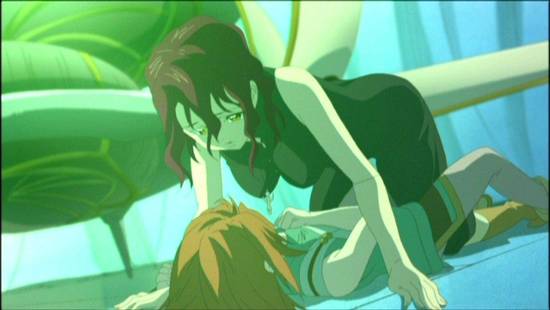
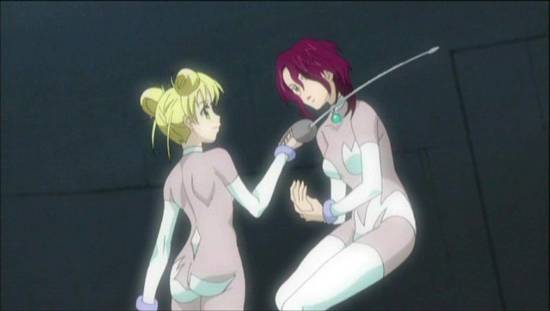
Your Opinions and Comments
Be the first to post a comment!